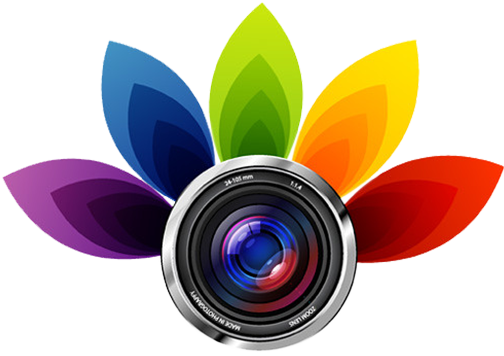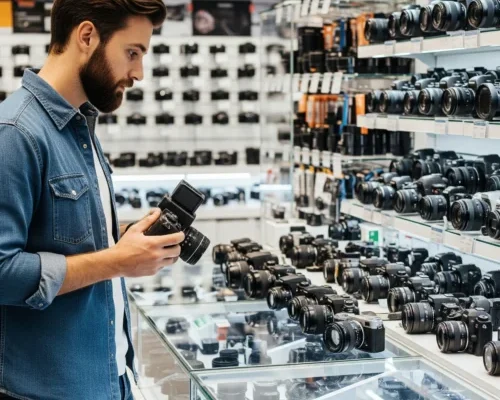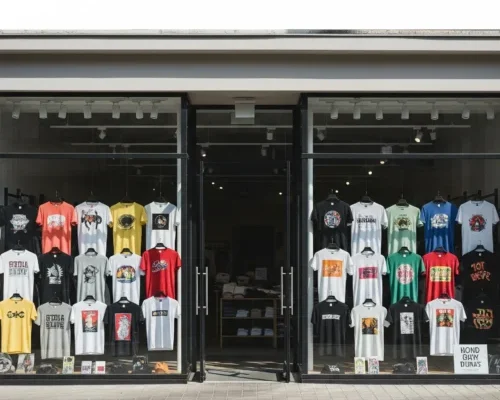Finding your dream camera can be tricky with so many models and features out there…
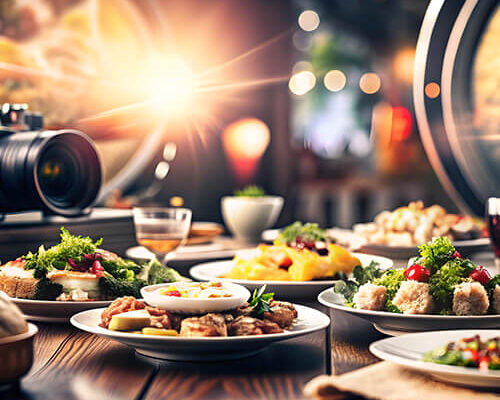
Picture-Perfect Plates for Gorgeous Food Shot Secrets
Beautifully arranged plates are now a key part of today’s food culture. This change is driven by social media, food bloggers, and influencer marketing. It’s not just a trend anymore. It’s about making every dish look appealing. We want each meal to be as tempting as it is delicious. Food lovers and professionals are increasingly interested in learning food photography. They want to show their dishes in the best light possible.
In this paper, we enter the world of food photography by disclosing some secrets on how to get such a picture-perfect plate. We will talk about some basic techniques to improve your food photos. This includes perfecting light and composition, as well as choosing the right props and angles. If you are a professional food photographer or a passionate cook, these tips will help you. They will help you take beautiful pictures of food. They will show not only the taste but also make the dishes look great, making them unforgettable.
Unlocking the Art of Picture-Perfect Plates
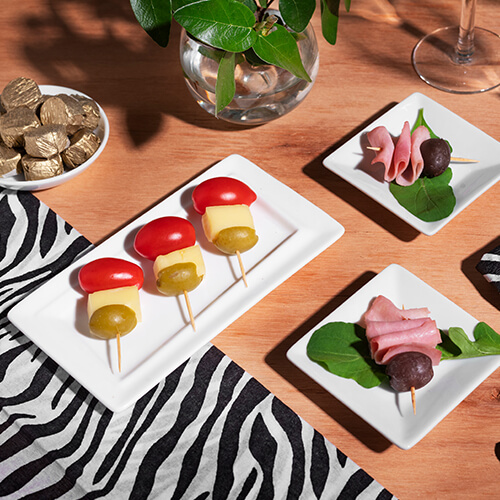 Food photography is an art that combines patience, attention to detail, and creativity. These skills work together to create beautiful plates. It’s more than just taking a photo of a dish. It’s about telling a story, evoking feelings, and capturing the essence of the meal. Knowing how to create a theme or tone that appeals to specific audiences is key to making picture-perfect plates. This involves closely observing the textures, colors, and shapes of the dish. It also looks at how these elements come together in a pleasing way.
Food photography is an art that combines patience, attention to detail, and creativity. These skills work together to create beautiful plates. It’s more than just taking a photo of a dish. It’s about telling a story, evoking feelings, and capturing the essence of the meal. Knowing how to create a theme or tone that appeals to specific audiences is key to making picture-perfect plates. This involves closely observing the textures, colors, and shapes of the dish. It also looks at how these elements come together in a pleasing way.
In learning food photography, style is the first thing. Understanding different ways to make changes, like adjusting light and perfecting composition, will help you create your own style. This will lead to a picture-perfect plate. You can practice analyzing the successful works of other food photographers. It encourages food photographers to take on creative challenges. This helps them create innovative images of perfect plates.
Essential Gear for Capturing Delicious Images
Invest in proper equipment to capture those picture-perfect plates truly. The important piece of equipment is a digital single-lens reflex or mirrorless camera. It offers great control over aperture, shutter speed, and ISO. These features are very important for capturing every delicious detail in your dishes.
A good lens, either macro or prime, will work well. It lets you focus on textures and ingredients. This way, every shot can look like those in gourmet magazines. The basic accessories include a sturdy tripod to reduce camera shake. A reflector helps with natural light, while a diffuser works for artificial light. Finally, a remote shutter release ensures clear images without any blurriness.
Besides having the right equipment, photo editing software is also crucial in perfecting your perfect shots of plates. Software like Adobe Lightroom and Photoshop lets you make small changes to your images. You can enhance color vibrancy, adjust contrast, and refine exposures. These tools will help make your food look delicious and irresistible. These tools will help you turn simple shots into amazing visuals. They will catch the eye of anyone and bring your food creations to life.
When choosing equipment, remember your needs. You might need lights and a backdrop that are more complex in a studio. If you are outdoors, you can use something smaller and more flexible. The right camera equipment and editing techniques can greatly improve food photography. This helps ensure that beautiful plates get the attention they deserve.
The Secret to Stunning Food Shots
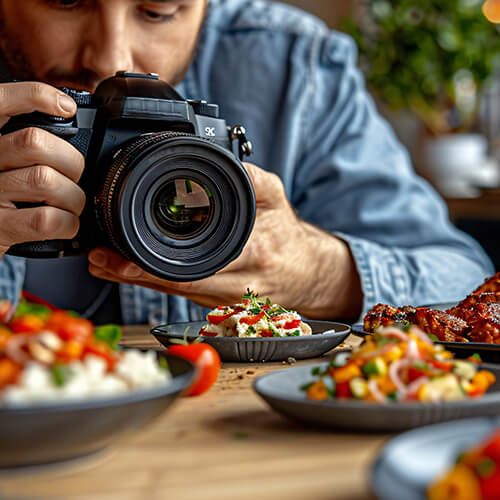 Lighting holds the key to picture-perfect plates, for it totally changes the look and feel of the image of your foods. The nature of the light you choose-natural, soft box, or strobes-is going to make a dramatic difference in your shots. It could be warm and inviting, cool and dramatic, among many more. First, let’s understand the direction, intensity, and color temperature of light before getting that ideal shot. Natural light, like sunlight coming through a window, gives a soft glow. This glow is great for rustic dishes.
Lighting holds the key to picture-perfect plates, for it totally changes the look and feel of the image of your foods. The nature of the light you choose-natural, soft box, or strobes-is going to make a dramatic difference in your shots. It could be warm and inviting, cool and dramatic, among many more. First, let’s understand the direction, intensity, and color temperature of light before getting that ideal shot. Natural light, like sunlight coming through a window, gives a soft glow. This glow is great for rustic dishes.
On the other hand, studio lighting can be adjusted carefully. This allows for better control over texture and color.
But the shadows will also do much to elevate your picture-perfect plates. They will add depth, texture, and visual interest to your photos. This makes food images look more delicious and three-dimensional. You can do this by adjusting the lighting to highlight the shadows. This will show the unique qualities of each dish. Such interaction of light and shadow will also help in displaying the details of the food-from crispy crusts to fresh garnishes.
Mastering light involves patience and experimentation. Do not be afraid to try different lighting setups, observe the effect, and adjust until you get what works best for each dish. By using light well, you can improve your food photography. This will help you take stunning photos that show off your beautiful dishes.
Tips for Beautiful Food Arrangements
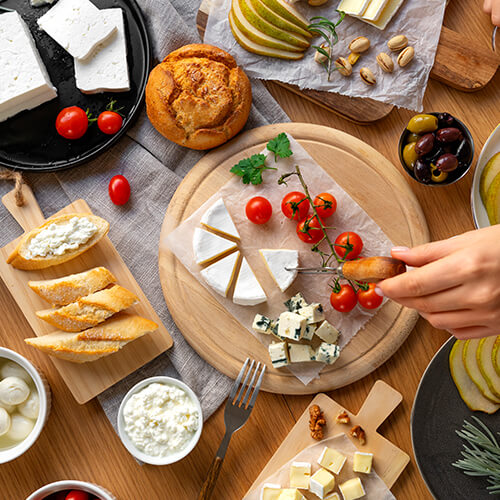 Food styling plays an important role in achieving picture-perfect plates, turning a simple dish into a visual masterpiece. Every element in the scene, like props or food placement, needs careful thought. This attention helps enhance the overall appeal of the setting. First, establish a theme which agrees with your target audience and the mood sought in the shot. A modern minimalist setting has clean lines and neutral colors. In contrast, a cozy rustic setting features vintage props and earth tones.
Food styling plays an important role in achieving picture-perfect plates, turning a simple dish into a visual masterpiece. Every element in the scene, like props or food placement, needs careful thought. This attention helps enhance the overall appeal of the setting. First, establish a theme which agrees with your target audience and the mood sought in the shot. A modern minimalist setting has clean lines and neutral colors. In contrast, a cozy rustic setting features vintage props and earth tones.
Consider what will look nice with the dish and pick props that will enhance the whole look of the image. Fresh flowers, linens, and great ceramics give class and charm to a dish. On the other hand, using items from past decades or rustic elements will add a sense of nostalgia and warmth. The key is to find a balance. The props should enhance the food, not overpower it. This way, the overall look feels harmonious and inviting.
Equally appealing is the staging of the dish, paying attention to negative space. Sometimes, it’s important to leave empty space around a dish. This creates room for the dish to breathe visually. It also helps keep the viewer’s eyes focused on the subject. Considering height, depth, and texture of all elements, use those as guides to frame up a visually appealing composition. Once you learn the skill of styling, you can create beautiful plates. These plates will not only look great but also show the essence of the dish in an appealing way.
Elevating Your Food Photography
Colors and composition are key in building food shots into creative expressions from simple snapshots. In choosing colors, you want them to be apt to your theme and the mood you want to show. Using strong and bright colors can add energy and excitement to images. This makes the perfect plate stand out and attract attention. A softer, pastel color palette can create a calm and elegant atmosphere. It adds visual appeal, even to delicate or refined dishes. Choosing the right colors is important for creating the right mood. It helps to evoke the feelings you want in your audience.
Employing the rule of thirds, leading lines, and symmetry will go a long way towards enhancing your food shots. The rule of thirds helps you take better photos. Divide your frame into nine equal parts. Use two horizontal lines and two vertical lines. Place your main subject along these lines or at their intersections. This creates a more balanced and interesting shot. Leading lines can guide the viewer’s eye to the main subject. This adds depth and interest.
Symmetry creates a sense of order and harmony. This is especially appealing in food shots. Also, it’s about being more aware of placement regarding your dish, props, and negative space.
You can create focus on the food by placing those elements carefully in your composition. This will help achieve visual balance. The smart use of colors and composition will make your images stand out. It will help your beautiful plates shine above the rest. This approach captures the essence of your dishes and connects with the viewer in a unique way.
How to Prepare Food for Photography
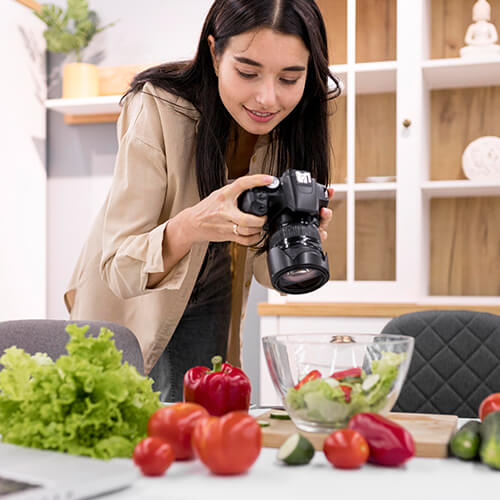 Food preparation for photography is one of the most important steps in this process. It means more than just turning raw ingredients into delicious dishes. It also involves making them look great for your camera. To create picture-perfect plates, use only fresh and qualitative ingredients first. Their color, structure, and aroma will directly impact the mood of your shots. Focus on seasonal ingredients and how they look. They can offer natural and genuine subjects for your photos.
Food preparation for photography is one of the most important steps in this process. It means more than just turning raw ingredients into delicious dishes. It also involves making them look great for your camera. To create picture-perfect plates, use only fresh and qualitative ingredients first. Their color, structure, and aroma will directly impact the mood of your shots. Focus on seasonal ingredients and how they look. They can offer natural and genuine subjects for your photos.
When you set up your plate, think about picture-perfect plates. Consider the idea of symmetry and balance to make your plate look appealing from any direction. Good garnishes and careful portion sizes can change a simple dish into a beautiful presentation. Accessorize with props and linens that complement the subject at hand-the food-eat it, but don’t let those elements overwhelm the dish.
Remember, it is all about making the food appealing, it is photogenic. Take your time and energy to prepare your food for photography. You will create picture-perfect plates that show the beauty and taste of the dish. This attention will improve your cooking skills and enhance your food photography. You will create lasting memories with your results.
Enhancing Your Food Photos with Post-Processing
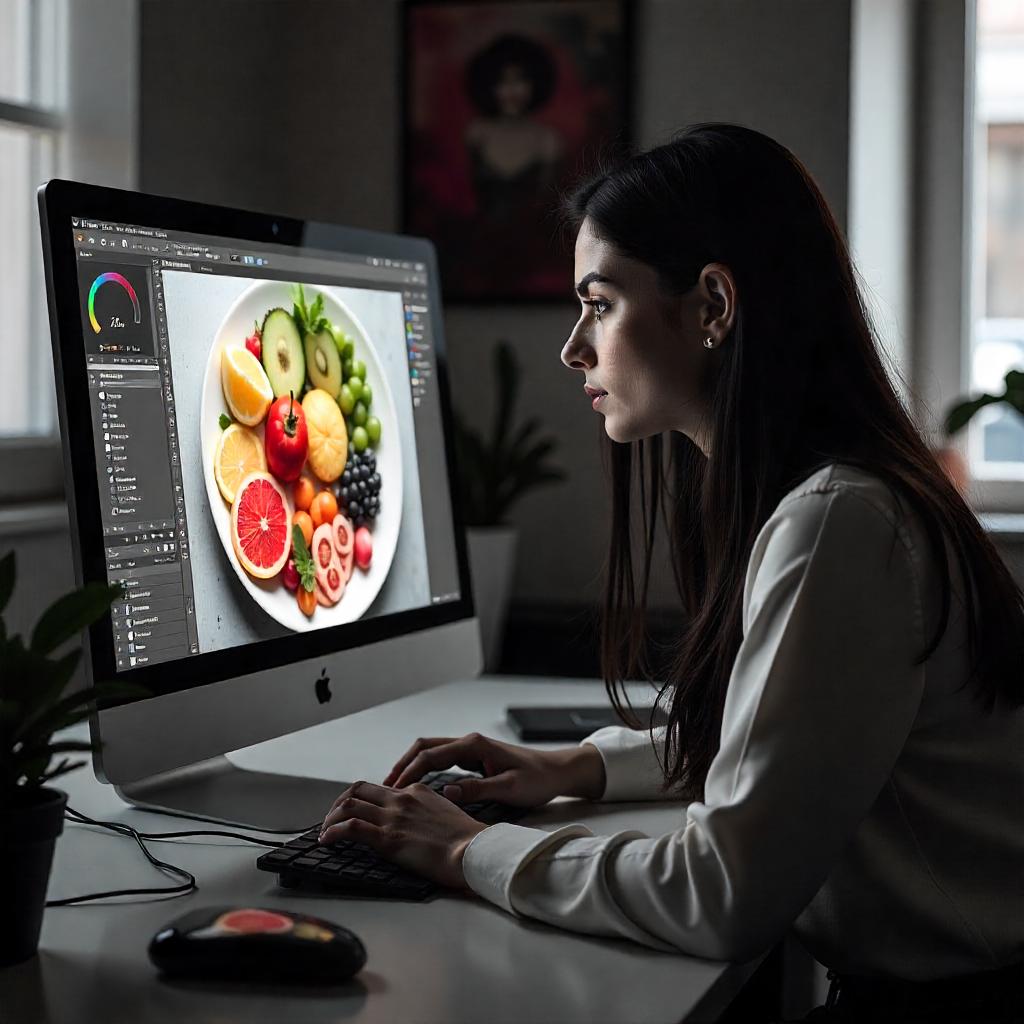 Editing is truly important in food photography; it transforms raw shots into visually appealing images. To create perfect pictures, photographers use post-processing. This helps them improve every small detail to meet expectations. First, play with color temperature, contrast, and exposure to accentuate the organic beauty of the food. This can make colors pop and highlight textures, setting up the mood perfectly for your picture-perfect plates.
Editing is truly important in food photography; it transforms raw shots into visually appealing images. To create perfect pictures, photographers use post-processing. This helps them improve every small detail to meet expectations. First, play with color temperature, contrast, and exposure to accentuate the organic beauty of the food. This can make colors pop and highlight textures, setting up the mood perfectly for your picture-perfect plates.
Retouch your images for blemishes and distractions with the healing brush, clone stamp, and/or the spot healing brush. These steps are important in ensuring that the dish itself and all the components make your picture-perfect plates look their best. It’s often in the tiny details-the subtle play of light and shadow-that really takes a photo of food pop.
Other than mere technical readjustment, editing also means storytelling. Creating an image that tells something about the mood or emotion can take your good food photography to great. These post-processing techniques will help food photographers create engaging visuals. They can turn simple images into stories beyond just a picture of the dish. Use editing to create picture-perfect plates that viewers will remember long after.
Mastering the Art of Food Photography
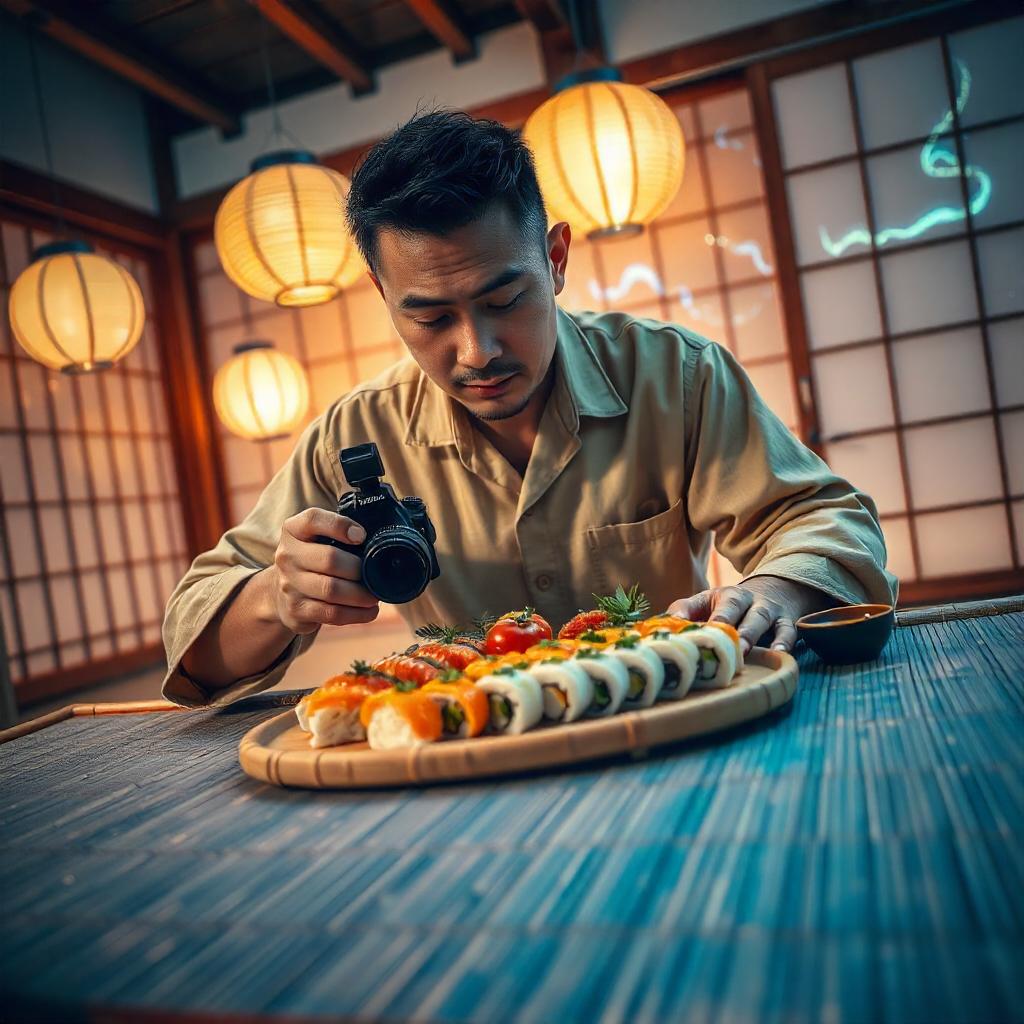 Food photography is all about patience, practice, and several learning curves along the way. Shooting like a pro is more than just pressing the shutter button. It involves understanding light and composition. These two elements greatly affect your result. Using natural light better, experimenting with angles, and carefully arranging your plates will greatly improve your work.
Food photography is all about patience, practice, and several learning curves along the way. Shooting like a pro is more than just pressing the shutter button. It involves understanding light and composition. These two elements greatly affect your result. Using natural light better, experimenting with angles, and carefully arranging your plates will greatly improve your work.
A great food photographer will develop a personal style and always look to push the creative boundaries. That can be as simple as trying things out, looking at different styles, and seeing what is new. Practice these tips from this article. They will help you capture great culinary moments in your photos.
Whether you’re taking photos for a client, a blog, or just for fun, focus on a few key ideas. In food photography, tell a story, show emotions, and make the food look beautiful. Make sure you integrate these elements into creating visually compelling food photos that make an impression.
Conclusion
In the world of food photography, the perfect plates are an art as much as they are a science. To improve your food photography, focus on lighting, styling, and composition. Use the right equipment and learn post-processing skills. These techniques will turn your snapshots into eye-catching images. Every plate is picture-perfect, but it takes both meticulous preparation and a stroke of creativity. Practice, experiment, and your odds of shooting amazing and salivating images will increase. Keep the tips from this tutorial in mind. Let your love for food photography shine in every beautiful plate you capture.
Read Next: A Beginner’s Guide to Food Photography
